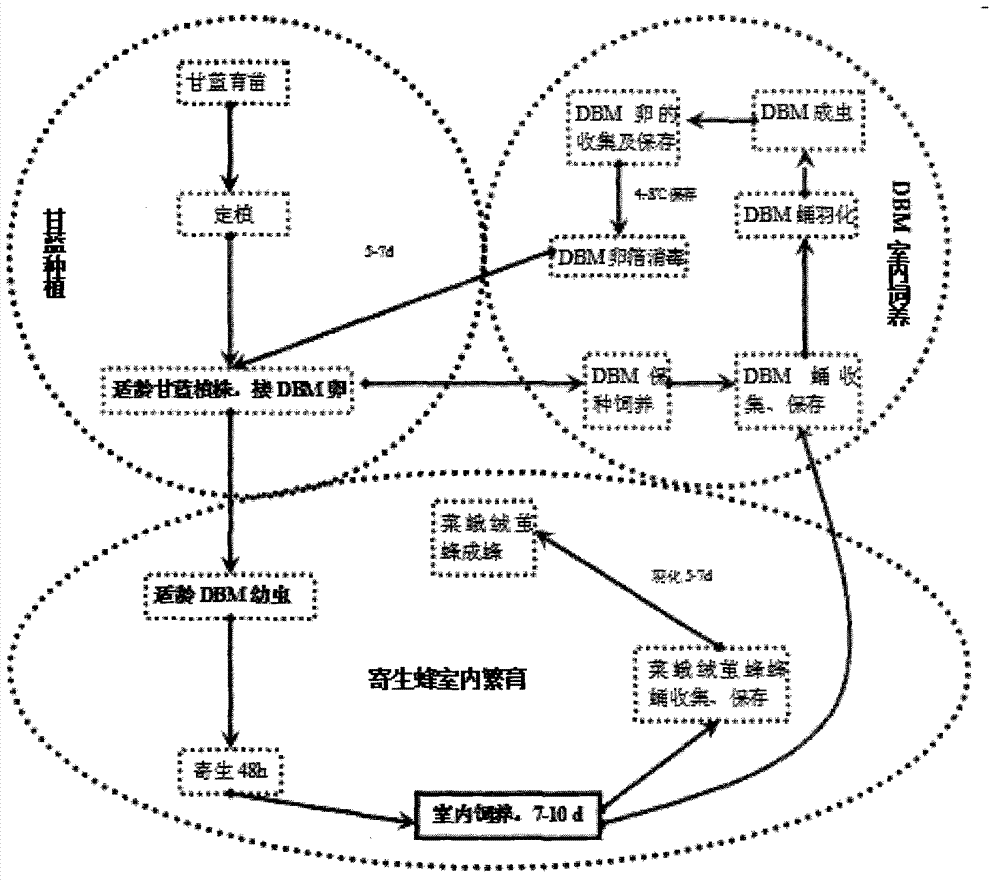Method of reducing amount of plutella xylostella through propagation and field release of cotesia plutellae
A technology of velvet wasps and diamondback moths, applied in the field of velvet wasp propagation and field release, can solve the problems of killing beneficial microorganisms, high cost, poisoning of humans and animals, etc., to achieve sustainable control, broad development prospects, and good control efficiency Effect
- Summary
- Abstract
- Description
- Claims
- Application Information
AI Technical Summary
Problems solved by technology
Method used
Image
Examples
Embodiment 1
[0061] In the present embodiment, the indoor breeding of Plutella xylostella is shown in Figure 1.
[0062] 1. Materials:
[0063] Plutella xylostella: collected in the field for indoor multi-generation breeding.
[0064] Plutella xylostella: collected in the field for multi-generation breeding indoors.
[0065] 2. Instruments and equipment
[0066] 2.1 Insect room, insect rack with light source, insect cage
[0067] Insect breeding room: It is required to keep warm, moisturize, have bright and uniform light, and facilitate ventilation. The roof should have a ceiling and north-south windows. The layout of the insect rearing room should be determined according to the number of rearing. There are insect racks with light sources on both sides of the room. The size is 140×45×200cm. Each insect rack has 4 layers, and the height of each layer is 40-45cm.
[0068] Pest cage: wooden frame, size 35×35×35cm, top and bottom glass or plastic boards, and 40-mesh sand net on the other ...
PUM
 Login to View More
Login to View More Abstract
Description
Claims
Application Information
 Login to View More
Login to View More - R&D
- Intellectual Property
- Life Sciences
- Materials
- Tech Scout
- Unparalleled Data Quality
- Higher Quality Content
- 60% Fewer Hallucinations
Browse by: Latest US Patents, China's latest patents, Technical Efficacy Thesaurus, Application Domain, Technology Topic, Popular Technical Reports.
© 2025 PatSnap. All rights reserved.Legal|Privacy policy|Modern Slavery Act Transparency Statement|Sitemap|About US| Contact US: help@patsnap.com

